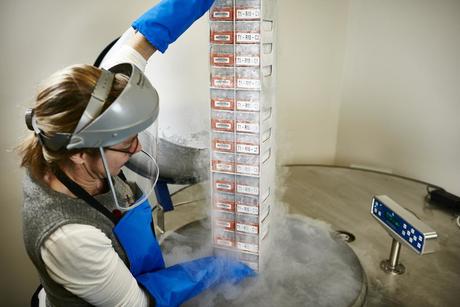State-of-the-art biobank opens at Museum Victoria

The Ian Potter Australian Wildlife BioBank, a liquid nitrogen cryo facility for the long-term storage of wildlife tissue samples, has officially opened at Museum Victoria. Said to be the first of its kind in Australia, the biobank will play a critical role in Australian wildlife conservation — particularly that of threatened and endangered species.
The biobank will enable researchers to store viable reproductive tissues such as embryos, eggs and sperm. According to Dermot Henry, head of sciences at Museum Victoria, it will “ensure the long-term management and protection of critical genetic and reproductive samples which are central to genetic research and reproductive biology programs for Australian wildlife species”.
The facility will allow Museum Victoria to transfer its collection of 44,000 wildlife tissue samples from its current -80°C freezers into liquid nitrogen-cooled cryotanks which, at -185°C, will prevent sample degradation over time. Security will also be improved as, unlike the old freezers, the liquid nitrogen facility is not vulnerable to power outages.
“The Ian Potter Australian Wildlife BioBank will enable exciting new opportunities for Museum Victoria to partner on collaborative research programs nationwide in areas such as conservation biology, evolutionary studies, adaptation and pharmacological research on toxins and venoms,” said the museum’s manager of genetic resources, Dr Joanna Sumner.
The BioBank currently has the capacity to house up to 160,000 samples, plus space for additional cryotanks that will house a further 400,000 samples. The storage facility is also available to other organisations, such as Zoos Victoria, wishing to house reproductive materials from endangered species for use in captive breeding programs.
Microplastics found to alter the human gut microbiome
Microplastic-treated cultures showed a consistent and significant increase in acidity (lower pH...
Sustainable, self-repairing, antimicrobial polymers developed
From medicine to electronics and optics, new materials developed by scientists at Kaunas...
A better way to create conductive polymers
New research disproves the longstanding belief that to create conductive polymers, substances...





